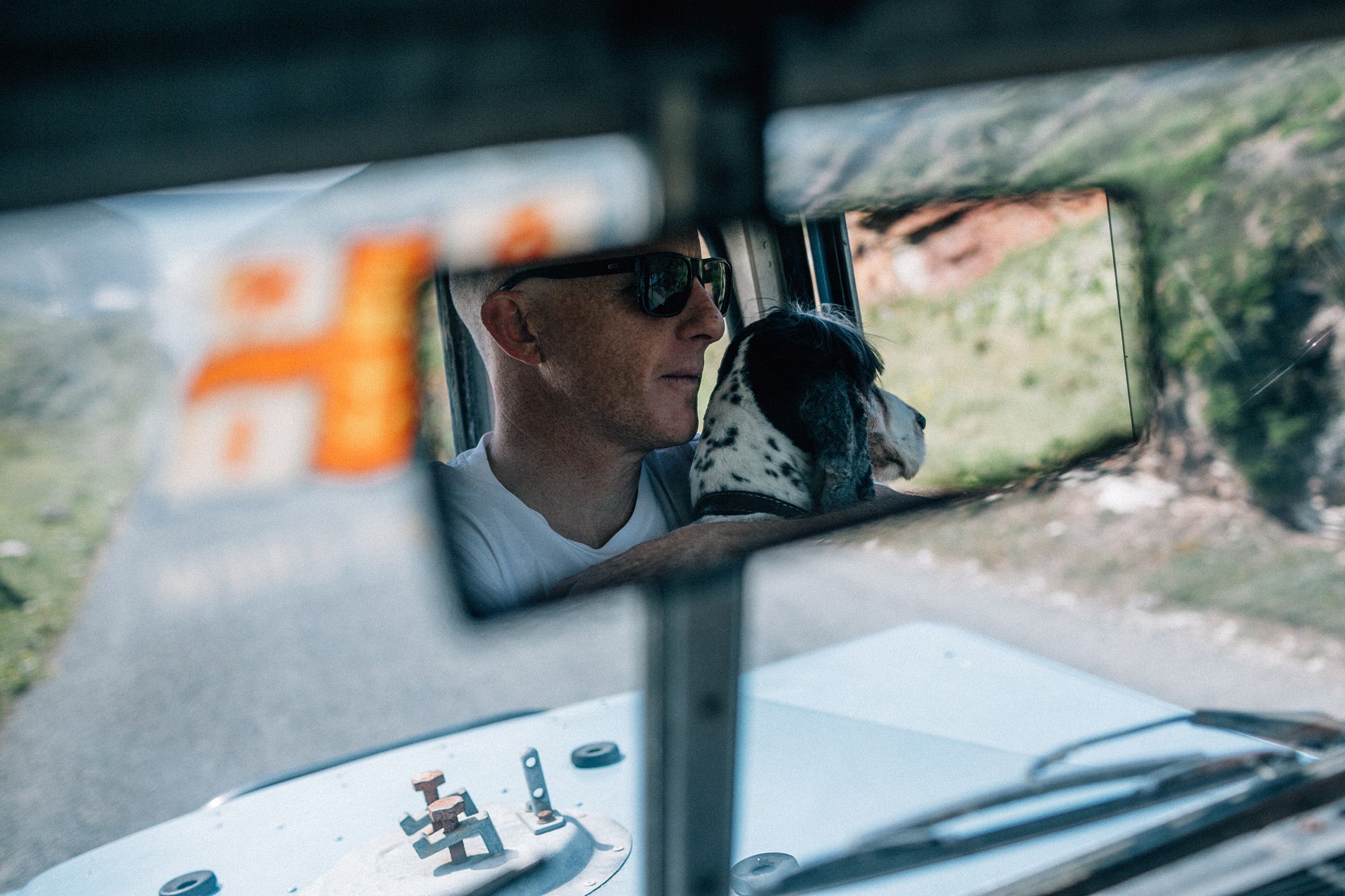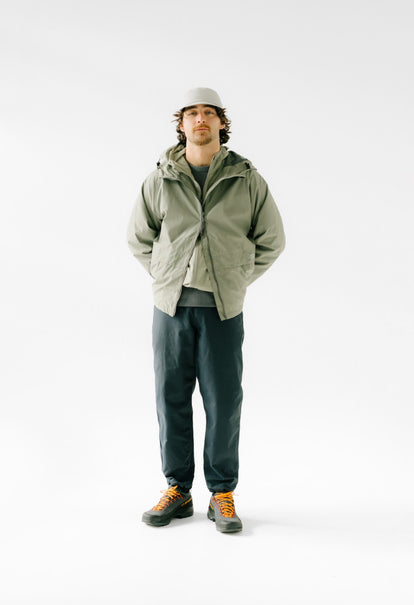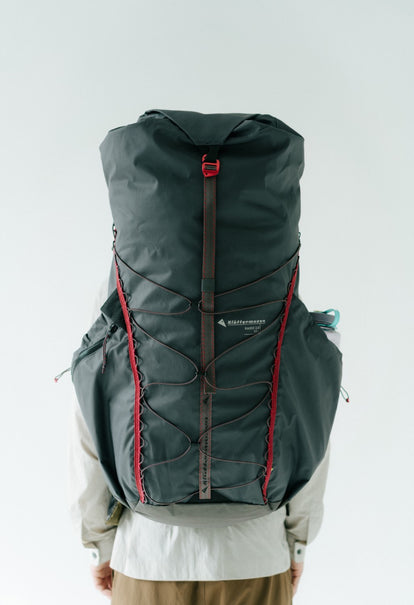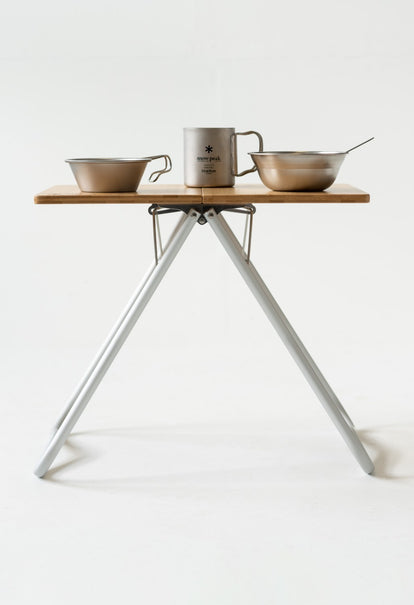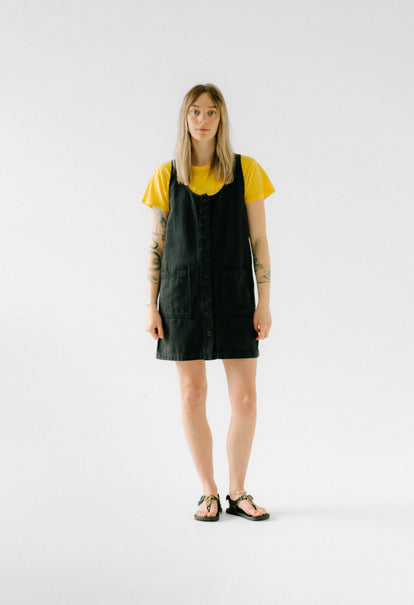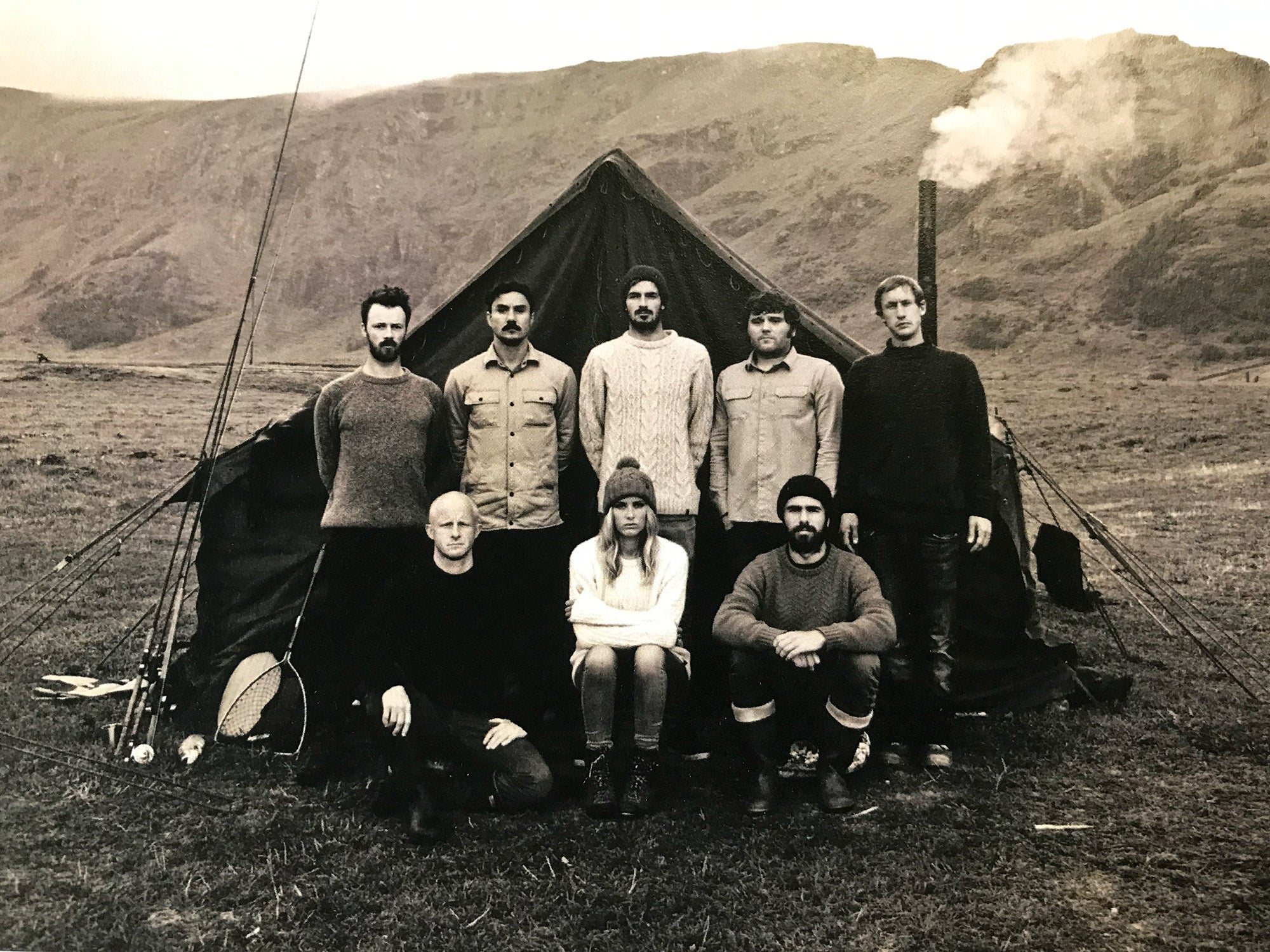

Surfing isn’t all blue skies and Bondi Beach, endless summers and sun-soaked shakas. For the last 21 years, Finisterre have been championing a much more relatable, attainable version of life in the ocean—making clever and considered clothing for the harsh climate of the British coast.
Founded by Tom Kay at a time when big name surf brands were at their mass-market peak, Finisterre’s output of fleece jackets, thick wetsuits and wool jumpers has gone on to prove that there can be more to ‘surf-wear’ than board-shorts and flip-flops.
Although to be honest, calling it a surf brand would probably be a bit of an understatement—and by some twist of fate the brand’s functional, hard-wearing gear is also pretty handy for woodland trails and back-country camping spots.
With the brand finally gracing the Outsiders rails, here’s a conversation with Tom about surfing in Britain, the early days of the brand and the joys to be had in paddling out into the ocean in the middle of winter…
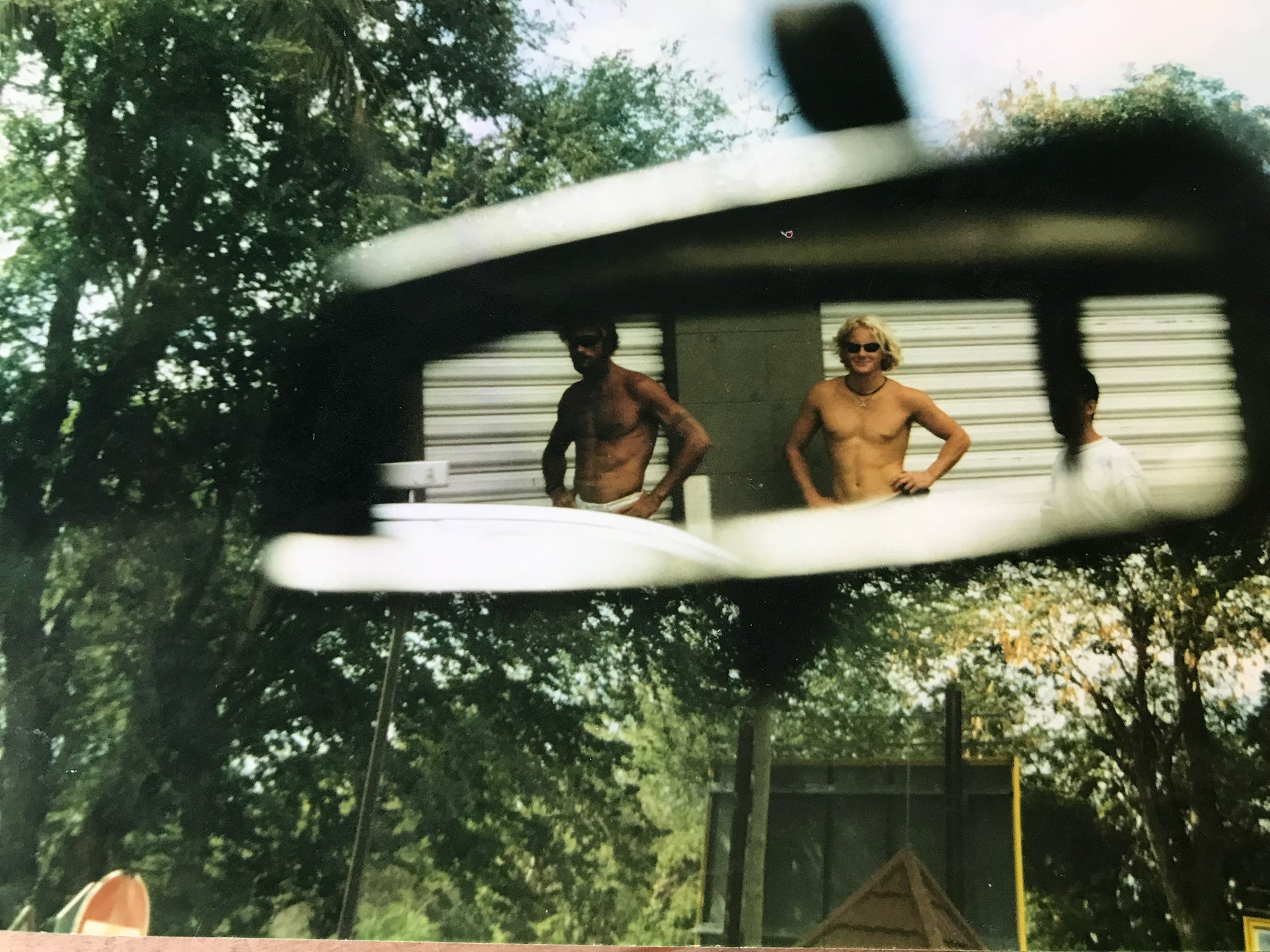

Going back to the beginning, was surfing something that was always around when you were growing up?
It was always about the sea—with my family we were always in and around boats or windsurfing. And then when I was about 15, I got into surfing. That’s the formative part of your life at that age—whether it’s music or team sports or art—and I got into surfing. It was my identity and everything to me—it was physical, it was commitment, it was radical in terms of being out there on big days—so it was the thing that defined me for the rest of my life.
I suppose surfing is one of those things that can become a whole lifestyle. It can inform what clothes you wear, what music you listen to and even the way you talk—it builds the whole picture.
Yeah—and you’ve got to remember that going back to the 90s, those subcultures were more defined than they are now because you didn’t have social media. You maybe had Channel 4 showing a bit of surfing at a random time on a Saturday morning, but that was it. So your tribe or your identity in terms of what you did was a lot more defined—you go down to Smiths and there might be a surf mag in there, but now you can follow people on Instagram who do all kinds of things.
What did surfing look like in Norfolk? What was surf culture to you back then?
It was always about surfing here, in this country—and on its day, that could be really, really good, but there was always a waiting period. That meant you really understood the weather, looking at charts and thinking about the cold, the wind and the rain. So that gave it a real level of commitment to it. I became obsessed with weather maps—sat looking at the weather on BBC1 and looking out for low pressure. I think because it wasn’t good all the time, there was a certain romance to it—and then when it was good, it’d be an elating experience.
Did that make you value it more?
Totally—without a question. In most places you have to wait for swells, but in tropical countries at the right time of year, there’s always swell. And everyone loves a trip or travel—I get that—but for me that waiting and the anticipation added to it. Getting to understand it—getting to know when it was going to be good at a certain spot—was always good. You couldn’t just turn up and have it be perfect—it was a whole experience… and it still is.
Is there almost a charm in the contrary nature of it? Like, “I’m doing something you think is crazy.” It’s against the grain—it’s not California.
I don’t think it’s a contrarian thing, but I think in activities like this there’s an amount of suffering you go through. It’s cold, you’ve got to get into a wetsuit—you have to overcome some challenges, whether they’re physical or mental, but it’s good for you. It’s like going out for a bike ride on a really windy day—you get kitted out and you go out, and it’s hard. 20 minutes of paddling in a big wetsuit when the water temperature is in single figures, it’s difficult—it’s not immediately enjoyable—but then you get out the back and you get some waves and you’re in the middle of nature and you see some sea birds or you get a little glimpse of the sun coming through the clouds… there’s always an experience to be had.
Yeah—is it called ‘type 2’ fun? Like something that’s not enjoyable at the time, but enjoyable after the fact?
I didn’t know they had a name for it, but yeah—that’s it.
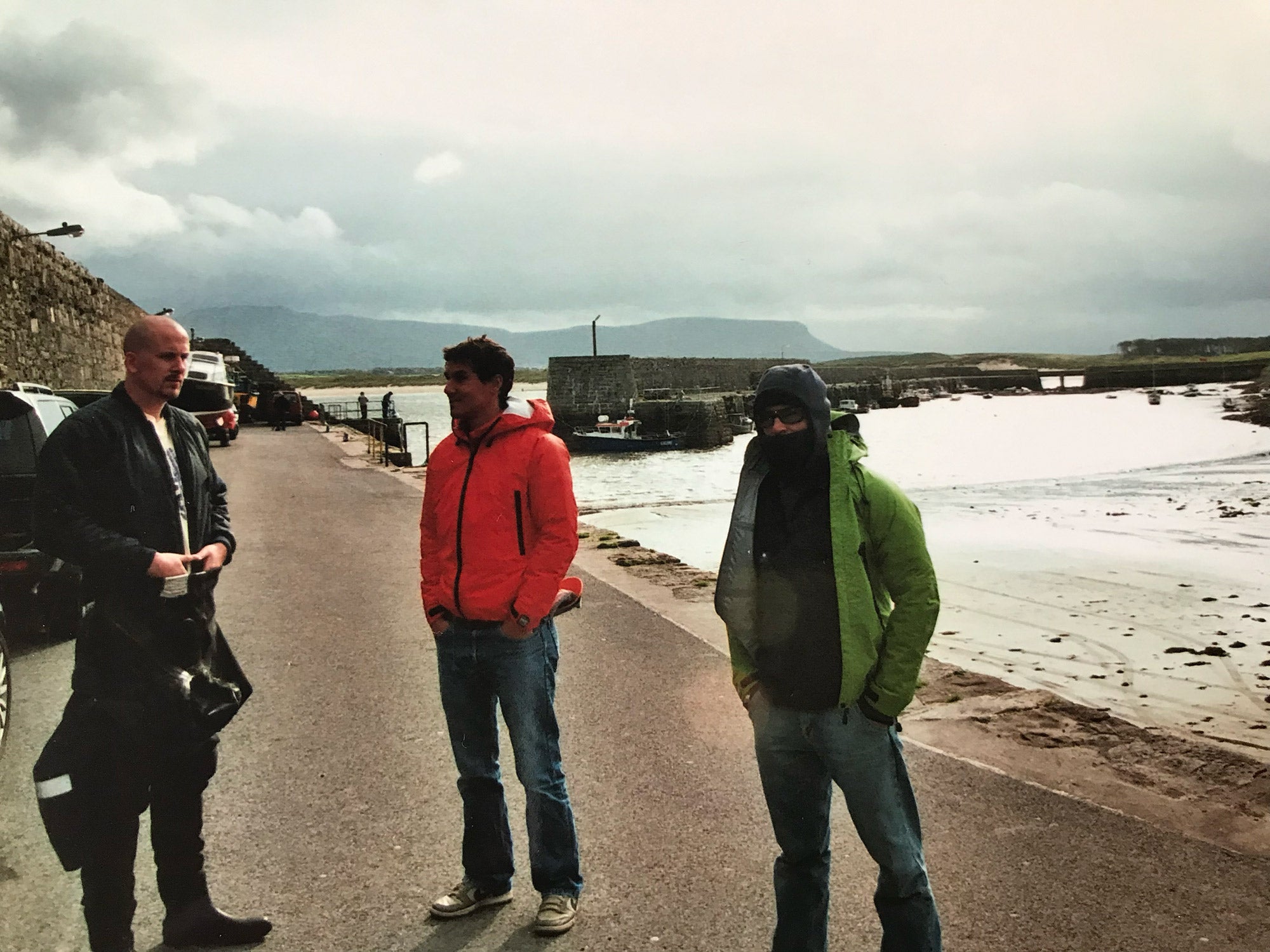

I imagine there’s times when you’re sitting in your car and it’s raining outside and you’re thinking, “Do I really want to go out now?”
Always—it’s hard, but once you’ve been out you always feel better for it, emotionally and physically.
How did this lead into starting Finisterre? Those Californian or Australian brands were huge in the early 00s, but was there something you felt was missing?
Those brands were huge, huge companies at that time. That was their heyday. They were publicly listed companies on the stock exchange. But then here I was doing that surfing I just described, and the sort of product that the ‘surf brands’ were marketing to me—these board shorts and flip-flops—didn’t fit with what I was doing in the middle of February in the sea down here.
And also I’d done biology at university, so I was always thinking about trying to make products in a better way—and how you could make a business that wasn’t just about consumption or transaction—using a brand as a platform for change, supporting organisations that were standing up for the ocean. And that founding ethos is still there 21 years later—the brand might have grown, but that spirit of the brand is the same as it was back then.
And the first thing you made was a fleece wasn’t it? That’s not exactly the first thing you think of when you think of ‘surf wear’.
Yeah—it was a windproof, waterproof and breathable fleece. I worked with some factories in Devon and got some made, and I still see them around today sometimes, which is amazing. The idea was to make a product that I needed—because when you get out of the car in the middle of February, you need something to put on to warm up. And then with that we’d support Surfers Against Sewage and the Marine Organisation, so it all felt like it made sense… and it went from there.
How were you selling stuff back then?
This was the early days of e-commerce. So we had this three page website—one page about the fleeces, one page about us, and one page about what the weather was doing—I’d update that twice a week. People would look at the product, and then send in cheques. If we had one or two cheques a week, then that was a good week. And then my sister and I would go to trade shows—trying to talk to customers.
Did people get what you were trying to do?
I think to start with, they didn’t get it. There was so much inertia from the customer’s point of view, because the big brands were sponsoring all these competitions and athletes—there was the glamour of surfing—and then there’s this little brand in St Agnes making fleeces—and back then fleeces were pretty uncool.
People were still going, “You can surf there? You must be crazy!” But I knew the world that I knew, and I always believed there was room for a brand like Finisterre in the world. I think back then that thing of sustainable brands—in inverted commas—just wasn’t on peoples’ radars at all, so I was just having to really hustle and be really quite guerilla about the marketing.
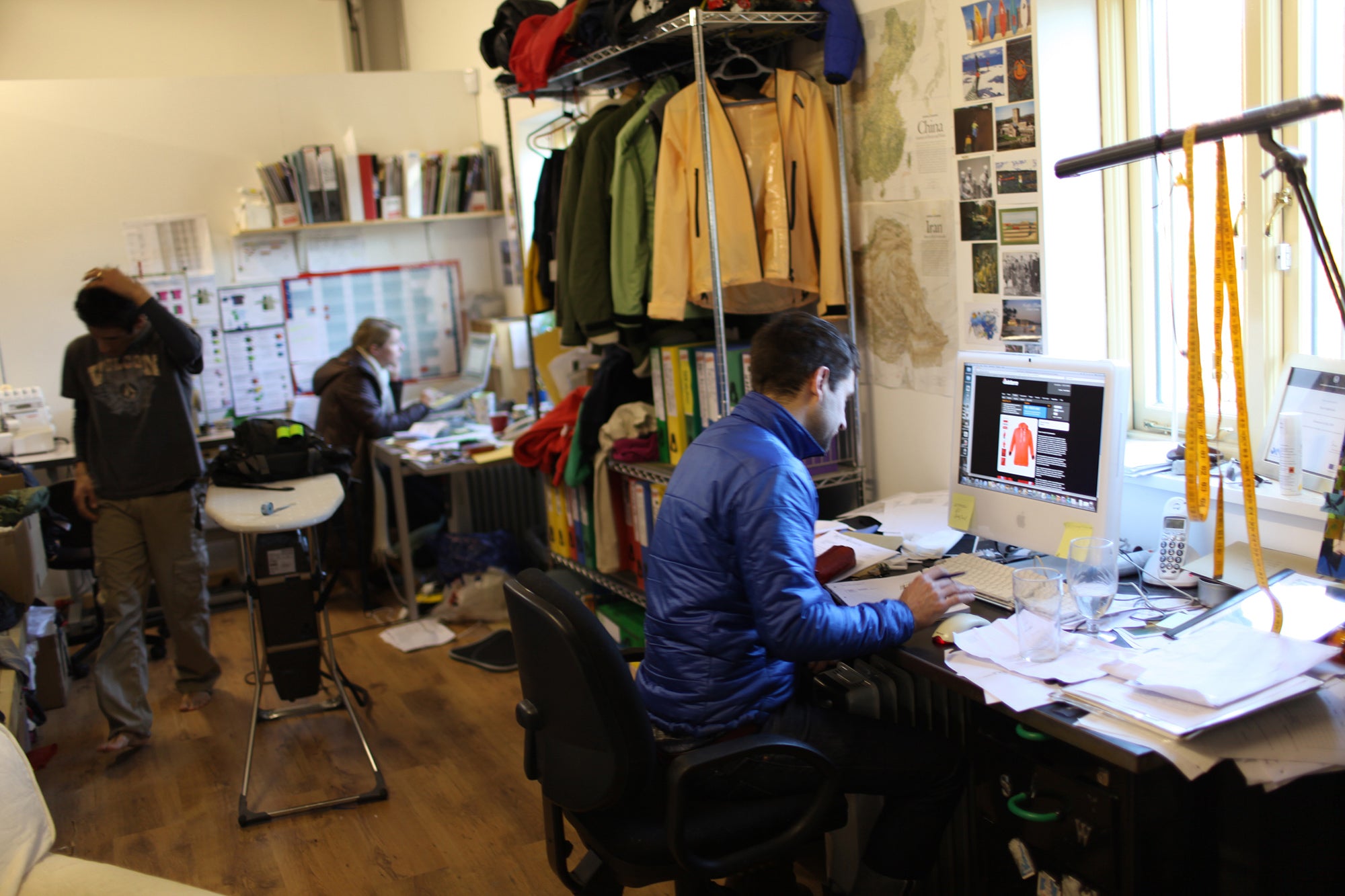

The big surf brands maybe weren’t an influence, but what was it that you did look at for inspiration?
My favourite products are the ones that you have, and they’re around forever. All my stuff I had when I was at university was all patched up. I looked a lot at the outdoor brands and the way they were making products, and then things like fishing smocks—looking at how things like that are made with the details and the stitching.
I suppose I was getting inspiration from products that were made to be used in a specific environment—that fit-for-purpose thing. If you look at how a deck jacket for example is put together—it’s made to be worn in the Bering Sea in the middle of winter. A lot of military or naval detailing is really interesting because it was made with purpose in mind, and it’s still around maybe 50 years later.
I was going to ask about that actually. It’s not like your clothes are old fashioned or nostalgic, but you do things like use wool as a technical fabric, or make a lot of things from thick canvas.
We’ve worked with wool for over 15 years now—and taking that centuries old fibre and giving it a modern twist is something that fits quite naturally with what we do. And wool is great for many reasons—it’s natural, it dyes really well, it lasts a long time, and when it’s wet it’s still warm. And it’s been used in outdoor settings for a long time, so it’s interesting trying to take that and reinvent it for the modern day.
You seem kind of at odds with the modern obsession with ‘newness’.
When I buy a product I always look for something that I can have for a long time. It’s hopefully exciting and relevant in its aesthetic presentation at the time I buy it—but it can’t be faddy. I want something that’ll still be relevant in 50 years time, rather than buy it today and then replace it the next year because that look has fallen out of fashion or I’ve gotten tired of it. The products I love the most are the ones I’ve had longest—so to me, the customer seeing a product on Instagram is just the start of the relationship, whereas you could argue that with some companies, that’s the end—you hit ‘buy’ on it, and then you realise it’s not actually that exciting.
How do you build that longevity into a product? How do you make something that someone will want to wear for 20 years?
I think there’s an element of trust. We’re pretty open and transparent in what we do—and obviously we don’t get it right all the time—but we’re always on a journey to get better. People can go into a store and touch and feel the product, and then we do a lot to do with aftercare—we’ve been doing repairs for 15 years here at St Agnes and now at some of our stores. And none of this is new—it’s about remembering how people should relate to the product that they buy.
Yeah—this is how people treated their clothes 70 years ago.
Exactly—you would have a pair of shoes which would last a lifetime—you’d fix them and look after them. They might get creases and folds or fade—and for me that’s great. I love that.
Do you think people have come around to these ideas in the last 21 years?
It’s not for me to say how people should, or shouldn’t purchase—because that’s a personal decision based on many factors in your life. All I can do is put the best product out there, made the best way, and be transparent about how it’s made.
The hard thing for customers now is to work out which brands are doing it out of a genuine authentic view of the world, or doing it just for market share. But the rising tide lifts all boats—there’s hopefully more awareness now than there was 20 years ago.
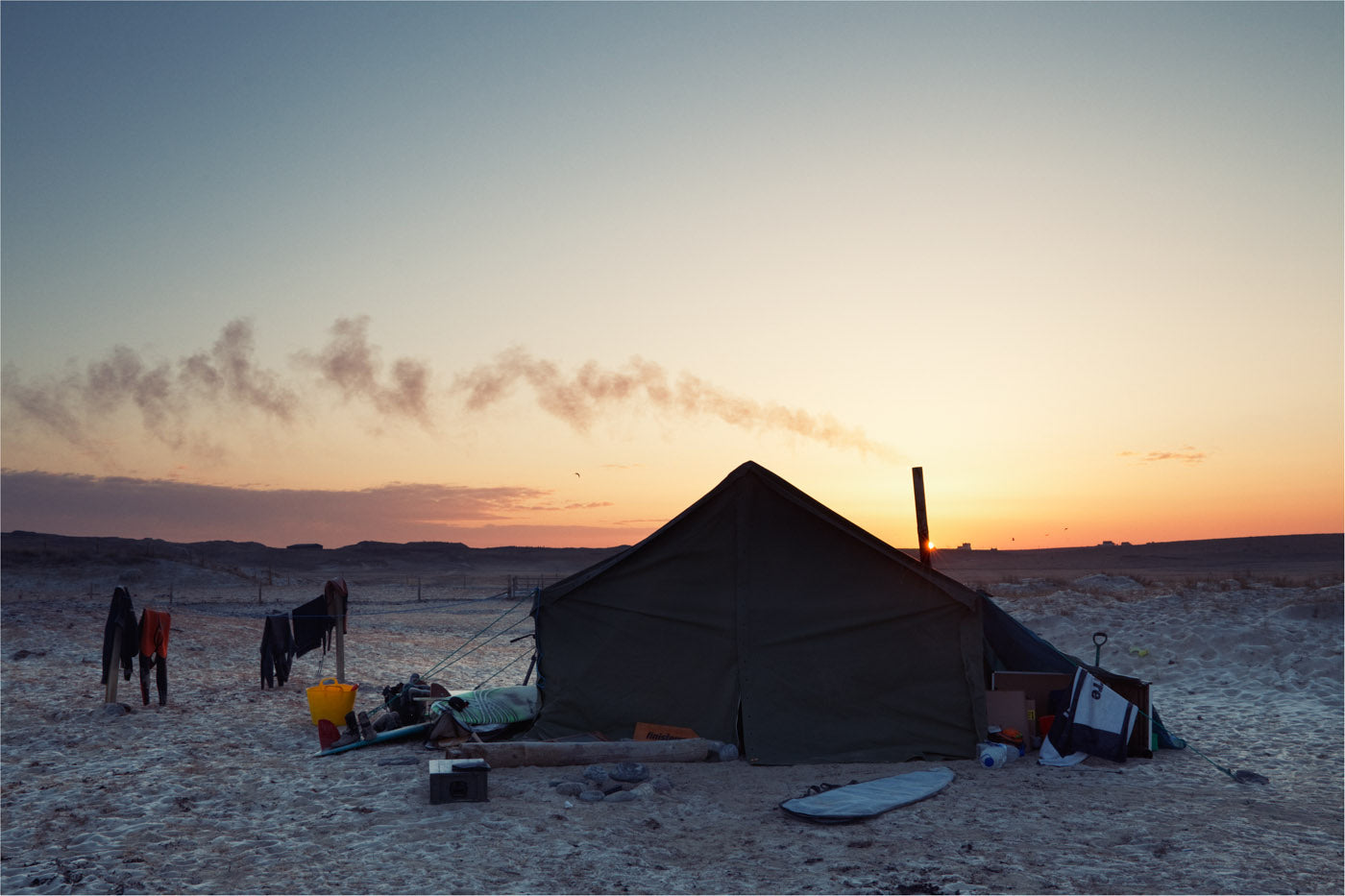

What about surfing over the last two decades? Has that changed?
I think things are a lot more inclusive now—and there’s obviously more work to be done—but yeah, now it feels like it’s just about people being in that environment whatever they’re doing and whoever they are, and loving it, and feeling welcome.
It feels like the boundaries have blurred a lot too—things aren’t as hardline as they used to be—you might surf, but you might also hike or swim or ride bikes or 100 other things.
Yeah—20 years ago you had this defined subculture you identified with, but now the boundaries are blurred. There’s a mindset with our community—and they might be surfing or swimming or walking or hiking—but they’ve got the same mindset. The mindset is fixed, but what you do with that mindset is more fluid in terms of the types of activities you take part in.
Definitely. You’ve long championed the idea of ‘cold water surfing’ and how you don’t need perfect weather to go in the water. Are you surfing right through winter? What are your techniques to cope with that?
Actually, in the South West it’s maybe the mildest in the UK, so I’ll wear one of our 4mm wetsuits with boots, and you can be in the water two or three hours no problem. But then if you go to the North East or Scotland, you’d want a 5mm wetsuit and gloves. But I think like anything, you get used to it.
And also you really embrace the seasonality—every season has things that are great about it, and things that aren’t so great. So summer surf is warm and sunny, but it’s busy. And then winter surf is cold, but there’s less people. Nothing good or bad lasts forever, so you really embrace that. You’re aware of the daylight, the migration of the birds or the changing of the vegetation—and it all goes so quick—so that stuff really makes me appreciate the here and now.
That makes sense. This year I swam outside right through the winter—and it was a good mind adjustment realising that I didn’t need a scorching hot day to swim.
Yeah, exactly. And there’s definitely an endorphin thing going on when you’re coming back in. It’s tough—but if you can overcome some mental hardship there’s the added endorphin of having succeeded. It’s a real buzz—it’s rewarding and gratifying and you feel nourished afterwards. Good waves are always good waves, and when I was younger it was about those amazing waves, but now for me it’s about the wider experience of getting in the sea—appreciating it more from a holistic point of view. Or at least I’m more aware of it.
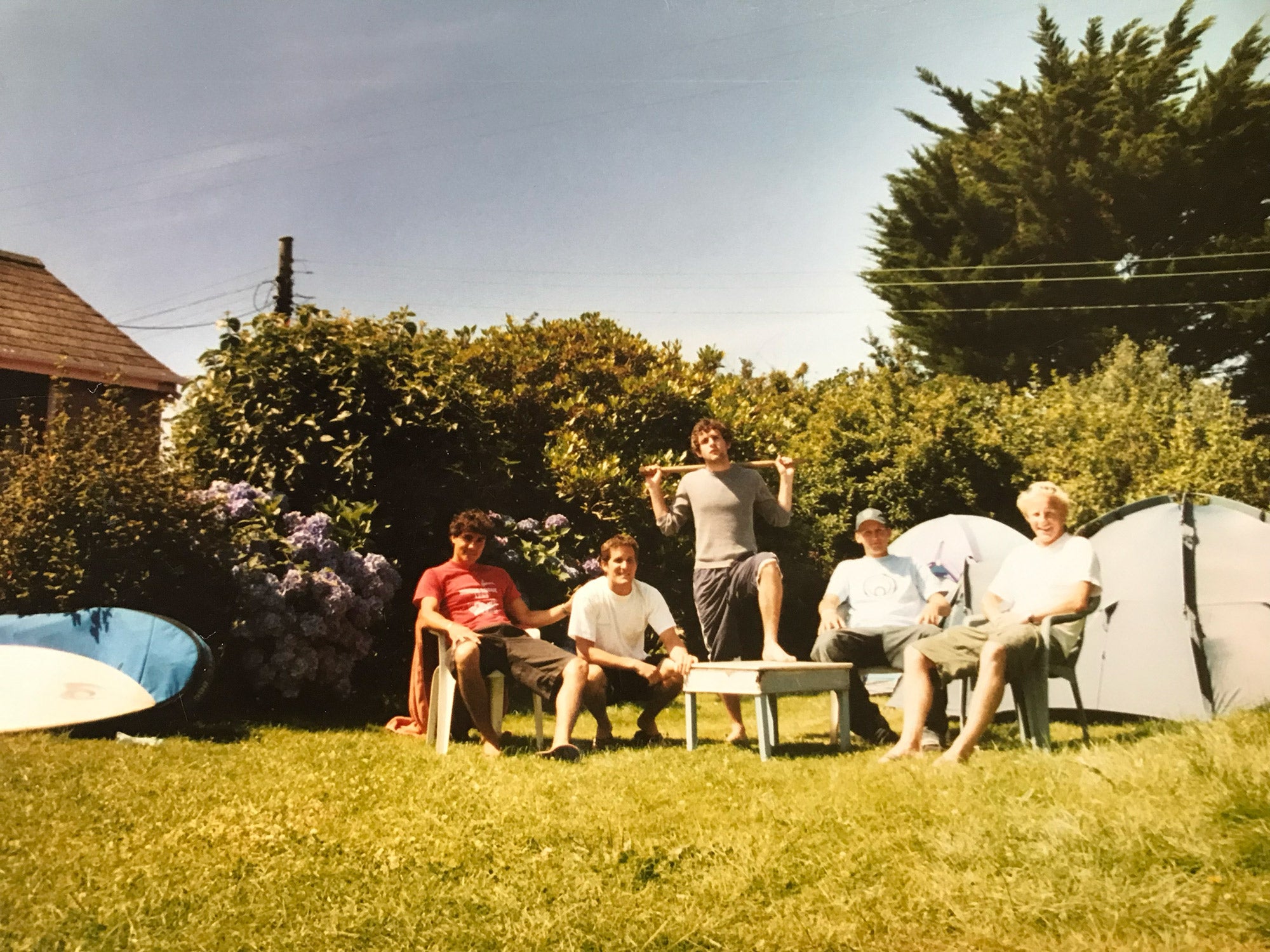

This is maybe a bit of an airy question—but what is it about the sea that us humans are drawn to? Everyone likes being by the sea.
People have thought about that for a long time, and it’s only been recently that people have started to study it and see why it's so beneficial. You don’t even have to get in the sea—just being near it, walking by the sea—has a real benefit. Ultimately, we come out of liquid when we’re born, so there’s that primal thing—and we’re evolved from the sea. You can look at it at any level—spiritually, mentally, physically—and then there’s that stuff about the blue mind, and about how being near blue space is good for you. So if we, as a brand, can connect people to the sea, then that’s a good thing.
I suppose that brings us nicely to your foundation which helps more people enjoy the sea. How did that come about?
Not everyone is lucky enough to have the access to the sea that I’ve had, so I thought, “How can I use the business to help people who might have barriers of entry into the sea?”
How did you do that?
In quite a few ways. I did a talk at a surf conference, and it turned out that one of the biggest barriers for getting into water was getting into a wetsuit, so three years ago we didn’t run ‘Black Friday’, we did ‘Blue Friday’ where we donated money from our orders to the foundation for adapting wetsuits. So if you had an issue with getting into a wetsuit, whether that was because of sensory issues or the fit, you could bring it in and then we’d work with a wetsuit designer to adapt the suits. And that’s probably been one of the most remarkable ways of breaking down the barriers into the ocean.
Am I right in saying you volunteer with the RNLI as well?
Yeah—I was on the crew here in St Agnes for 20 years. I had a pager, and when that went off—at any time of day—I’d then run down and get in the boat. Being around coastal communities for my whole life, it was something I always wanted to do, so I’m super proud of that time. The RNLI is 200 years old this year, and that spirit is still there—people volunteering to go out to sea and save someone’s life. It might have been more treacherous back then when you were rowing out in a bit of knitwear and there wasn’t GPS, but even now you’re still out there in a boat in the middle of winter in big surf, and you don’t know what you’re going out to.
Around here you get a lot of tidal cut-off—the tide can come in pretty quick so coves can be cut-off and time will be of the essence to come around and get someone off the beach who’s in real trouble. It’s quite extreme stuff—and there’s 256 stations around the country—so it’s amazing that that’s going on a daily basis, with a bunch of volunteers, it’s a really remarkable thing.
Definitely. I suppose I should probably wrap this up now as we’ve talked for a while. It feels like you’re still fully living the surf lifestyle that you got hooked on back in your teens—what is it about surfing that makes you love it so much after all those years?
The act of actually riding a wave is a really amazing experience. You turn, you paddle, it picks you up, it’s a very free experience, very much in the moment. And then when it’s gone, it’s gone. It’s physical, it’s spiritual—it’s a beautiful thing that I’m very lucky to be able to do. I went surfing on the weekend, and it was knee high, but it was beautiful—that feeling of gliding on a wave. The fact that it doesn’t last forever, and the fact that you’re not in control of it—mean that you really appreciate it for what it is. I’m really grateful for it.
